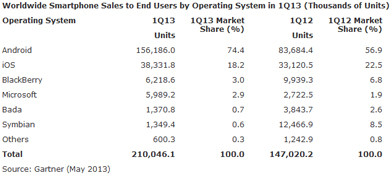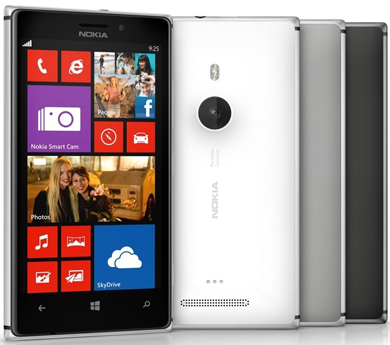News
New Windows Phone Launches in Weak Market
According to the latest figures from research firm Gartner, Microsoft's share of the smartphone market has not improved from last quarter.
Globally, nearly 6 million Windows Phone devices shipped during the first quarter of 2013 out of a total of 210 million, giving Windows Phone a market share of 2.9 percent, according to data released by Gartner on Monday. That's roughly equivalent to the smartphone platform's market share in Q4 2012, when it had a market share of 3.0 percent, with just over 6 million devices shipped.
However, Windows Phone's Q1 2013 market share is up from the year-ago period's share of 1.9 percent.
Windows Phone trails Google's Android OS (which shipped on 156 million devices for 74.4 percent share), Apple's iOS (38 million devices and 18.2 percent share) and BlackBerry (6.2 million devices and 3.0 percent share).
 [Click on image for larger view.]
[Click on image for larger view.]
Nokia, Microsoft's biggest smartphone OEM partner, accounted for 5.1 million of all Windows Phone devices shipped during the quarter. However, "Nokia is yet to see high growth in the smartphone segment," Gartner said. "Nokia's position in the smartphone market dropped to No. 10 in the first quarter of 2013, from No. 8 in the fourth quarter of 2012."
Gartner's report came on the eve of the unveiling of Nokia's newest flagship Windows Phone 8 device, the Lumia 925. The Lumia 925 will be available in the United States during the second half of this year from T-Mobile. Neither Nokia nor Microsoft provided information on U.S. pricing, though in Europe it will retail for 469 euros (roughly $600).
The Lumia 925 features 4.5-inch AMOLED display, an 8.7-megapixel rear-facing PureView camera, a 1.2-megapixel front-facing camera, 16 GB of memory with an addition of 7 GB of free Microsoft SkyDrive cloud storage, and 1 GB of RAM. The Lumia 925 is the first device in the Lumia line to be designed with a metal frame, Nokia said.

It will also launch with the most updated version of Windows Phone 8, which will be rolled out to older phones this summer, Microsoft announced on Tuesday. The update will bring a few small changes, including the ability to listen to FM radio, as well as expanded carrier access to Windows Phone 8's Data Sense technology. The update will also support new sync protocols, CalDAV and CardDAV, ensuring that Windows Phone 8 devices will be able to access Google services that use Microsoft's Exchange ActiveSync technology (see "Google Extends Windows Phone ActiveSync Support by Six Months").